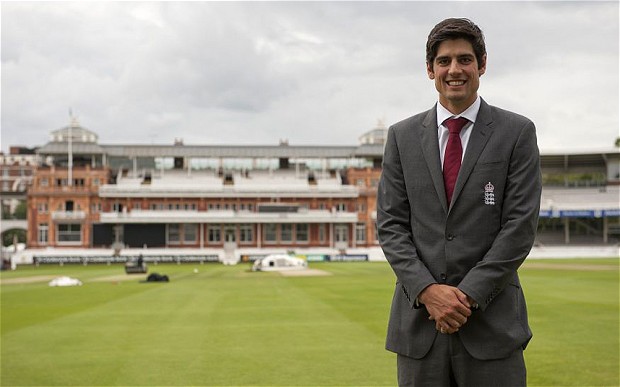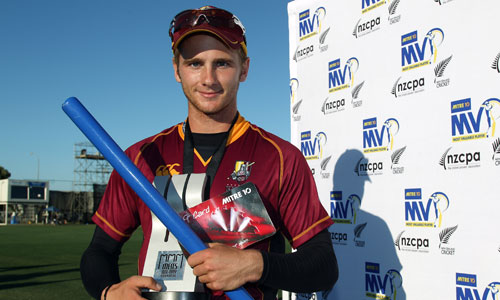
BJ Watling – 120 v England at Headingley
Bradley-John Watling’s second test century of the calendar year was a hugely important one. Playing in this test as a batsman only, he dug in, then expanded and put his team firmly on top. It’s the sort of innings to wax lyrical about, and different to his more legendary “dig-in” knocks to save tests. At the time of this innings he was the third man to make a second test century in 2015 – alongside Kane Williamson and Alastair Cook. With this innings he took his average to over 40, and made his 5th test hundred in just his 53rd innings. To put that in some context, Matt Prior made 7 centuries in 123 innings, and we’ve recently lauded him as a modern powerhouse.
Mind boggling fact #1 – BJ Watling’s hundred is the first made by a New Zealander at Headingley in test cricket. His 120 beat the previous best of 97 by Stephen Fleming in 2004. Luke Ronchi’s 88 was 4th best when he made it. It was the 23rd hundred made by a New Zealander in tests in England, and the second man to make 120 for his country here (Stewie Dempster did it at Lord’s in 1931). 120 is the 8th highest score made in England by a New Zealander. 14 of those 23 hundreds were made at Lord’s.
Have you seen a test 120, Dmitri? Well, there have been 58 of them since the first test match. The answer is, a little to my surprise, yes. It was a century totally overshadowed by a legendary one later in the innings. It was a hot summer’s day in 2001 at The Oval, and after a lengthy opening partnership between Matthew Hayden and Justin Langer, Mark Waugh strolled to the crease. He did what he did when in nick. He made 120 look easy. Then his twin came in on one leg, made 157 not out, and everyone forgot Waugh (and Langer’s) ton.
The first 120 in test cricket was made by a man who saw one of his long standing records nearly broken a few weeks ago. Bobby Abel, of Surrey and England, made 120 against South Africa in Cape Town in 1889. This is an astonishing score card, because Bobby himself beat the hosts by an innings and 30 runs. England posted 292 and Johnny Briggs then took 7 in South Africa’s first and 8 in the second to bowl the hosts out for 47 and 43. 14 of those wickets were bowled and the other LBW. This is brilliant stuff. Bernard Tancred carried his bat for 26 in the first innings. If he’d played for my school 2nd XI in 1985, he’d have been dropped (30 years on and yes, I’m still bitter!)
I’ll let the almanac describe the state of affairs…
The last match of the tour and a complete triumph for the Englishmen, who outplayed their opponents at every point, and won in an innings with 202 runs to spare. It was the second eleven-a-side fixture, and was more decisively won than any other match during the trip. The South African team, with the exception of Mr. Tancred could do absolutely nothing against Briggs, batsmen who had scored well in earlier matches failing dismally. The Lancashire bowler met with wonderful success, taking in all fifteen wickets for 28 runs – a worthy finish up to his briliant exertions during the trip. Abel, too, wound up in splendid form, making his third hundred during the tour. He went in first and was out seventh, making 120 out of 287.
No frippery or waxing lyrical. Well batted Mr. Tancred. Martin Williamson’s Cricinfo article is brilliant in explaining the circumstances behind this test .and the impact it had on South African cricket. There were three England players in that team that played their only first class games on this tour. But what is even more sobering is the fate of England’s young captain (he was 23):
Bowden, however, was an altogether sadder story. At 23 years 144 days, he was and remains England’s youngest captain, but he never even knew he had represented his country, or even saw his homeland again. In 1891 he headed north with Rhodes where he was incorrectly reported to have been killed. Not long after he was found to be alive, he did die, in a remote a mud hut in Umtali. The final indignity was that his body had to be protected from marauding lions – prior to being interred – in a coffin made from whisky cases.
I may be a bit down on Alastair Cook, but…
Bobby Abel’s famous record is the 357 he made for Surrey in 1899 against Somerset. It is said on Wikipedia that the England selectors were unwilling to choose him after 1896 over concerns about his eyesight. Seems to have more in common with KP than we think!
Other 120s that caught my eye included the previous one made in tests, which has also semi-legendary status. We’re talking about Ben Stokes at Perth. The only century made by an Englishman in the international part of the tour. The one that he needed to be persisted with because of it!
Bob Caterall of South Africa made two scores of 120 in test matches, within a fortnight of each other. In June 1924 he followed up his 120 at Edgbaston with the same score at Lord’s. Fellow countryman Bruce Mitchell also made two 120s against England, but they were separated by 17 months and the distance between The Oval and Newlands. Michael Vaughan has two 120s, with the first being his first test century against Pakistan at Old Trafford, and the other against Bangladesh at Lord’s in the run up to the 2005 Ashes.
Other players to have made 120 twice in tests include West Indian wastrels Viv Richards and Brian Lara and Sri Lankan wicket-keeper Prasanna Jayawardene.
In 1987 fellow Kiwi Jeff Crowe made 120 not out against Sri Lanka. It took him 609 minutes and nearly 400 balls. This was the same test that Brendon Kurrupu batted 777 minutes for 201. If time had not expired, lord knows how long Crowe would have taken to get to that, and the slow century award on this site could be called the Crowe (Jeff) Award! This looks like five days of thrilling cricket!
This was Watling’s third highest score in tests, his highest test score not made at the Basin Reserve, and the fastest of his test tons.
BJ Watling’s hundred came up in 136 balls with 13 x 4 and 1 x 6.












